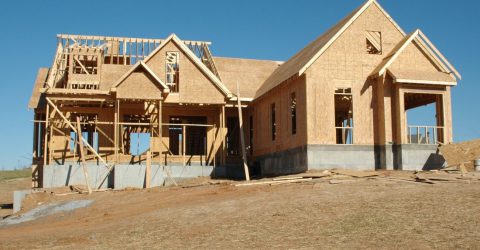Are new-build homes going to receive full-fibre broadband in future?

A couple of weeks ago, the phonetically challenging Department for Digital, Culture, Media & Sport released the equally hard-to-pronounce Future Telecoms Infrastructure Review.
Weighing in at a meaty 89 pages, the FTIR document outlined how the UK could become ‘a world leader in digital connectivity’.
Cynics might scoff – especially if they’ve read our recent story about how the UK’s average broadband speed lags behind 34 other countries.
Nevertheless, Government encouragement of broadband infrastructure roll-out ought to be welcomed – and one FTIR proposal caught the eye of many industry observers.
This was the suggestion full-fibre broadband must be connected into every new-build home in the UK, with joint obligations on housebuilders and network operators.
Legislation along these lines would give new homes a compelling advantage over resale properties, boosting demand and hopefully accelerating supply of more dwellings.
It should also eliminate those stressful first-day attempts by new residents to get an Openreach line installed as quickly as possible.
This process is often maddeningly difficult and unnecessarily protracted.
What is full-fibre broadband?
There are two terms used to describe domestic broadband connections.
These are Fibre to the Cabinet (FTTC) and Fibre to the Premises (FTTP).
Full-fibre broadbandWhy isn’t the Government talking about every home?
The FTIR report focuses on new homes because new estates or buildings provide cable companies like Openreach and Virgin Media with easy access and few obstacles. Costly and inconvenient street works aren’t required before a residential estate is completed. Retrospective installation is further complicated because access by-laws and permit policies vary from one local council to the next. A construction site is the perfect place to bury fibre cables, which can be connected up quickly and easily once residents move in. And if people want to use a mobile dongle instead, or even live without the internet entirely, signing up to broadband is entirely optional. The companies responsible for laying fibre cables will save money by not having to dig up and re-lay pavements, liberating funds to reinvest in other services. It’s perhaps surprising that more housebuilders haven’t recognised the benefits of offering full-fibre broadband to their customers. The Government clearly feels more encouragement is needed, especially given its highly ambitious targets for building 300,000 homes every year. Our existing broadband infrastructure may struggle to cope with so many extra properties, necessitating considerable investment at ground level – or slightly below it. Plus, as we become ever more dependent on the internet, it will become unacceptable to wait weeks or months to get connected to broadband when moving home.






